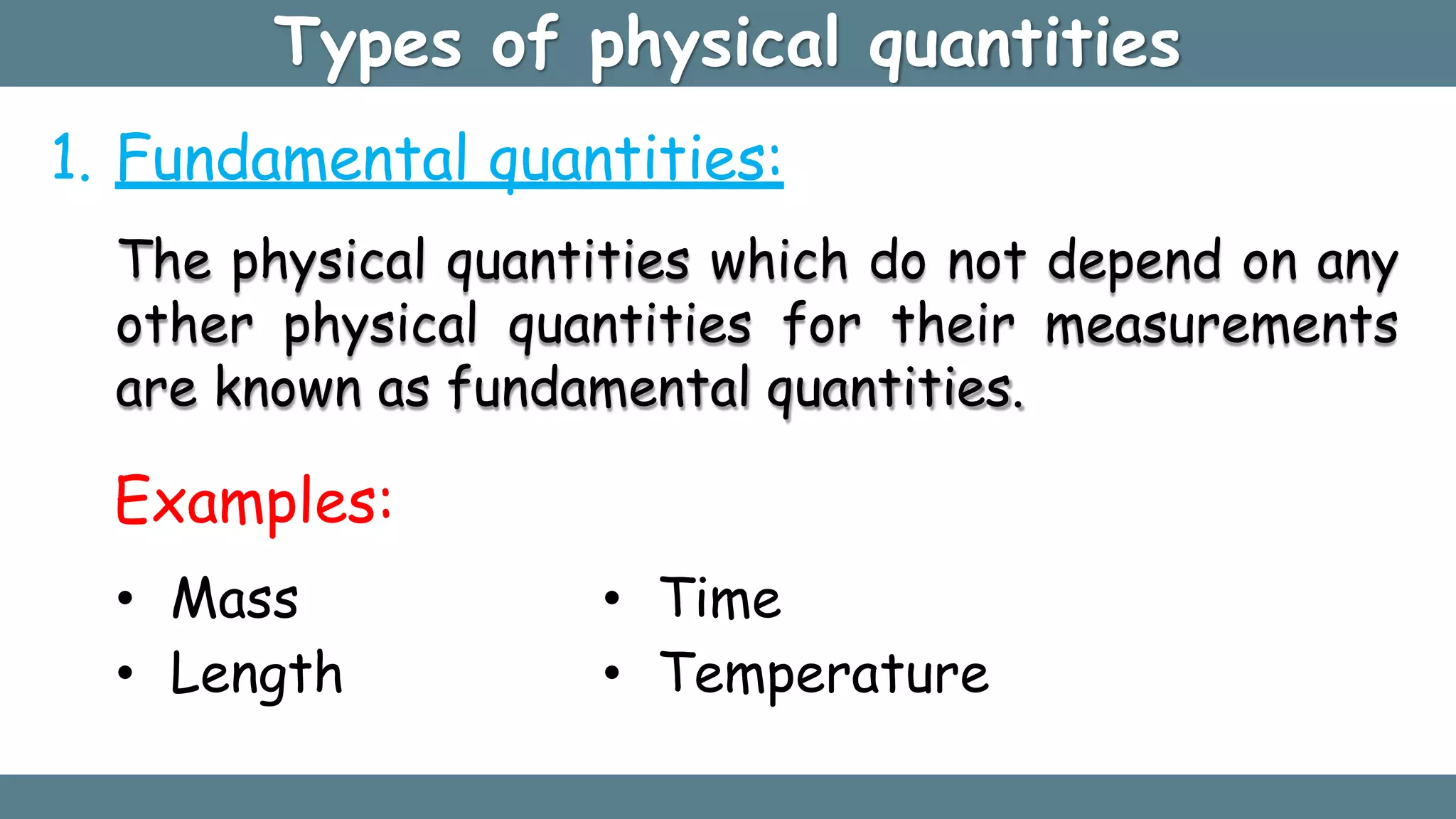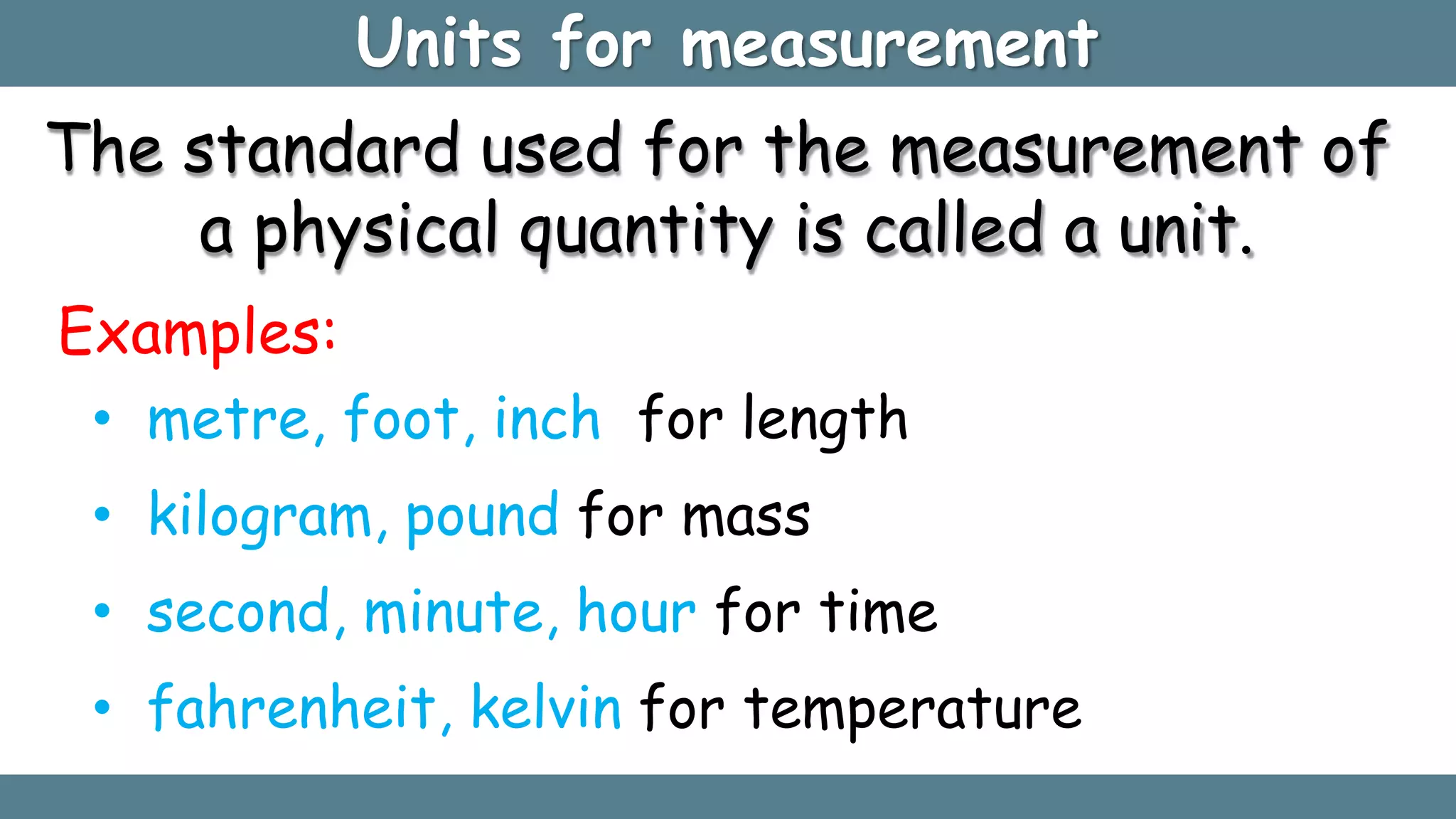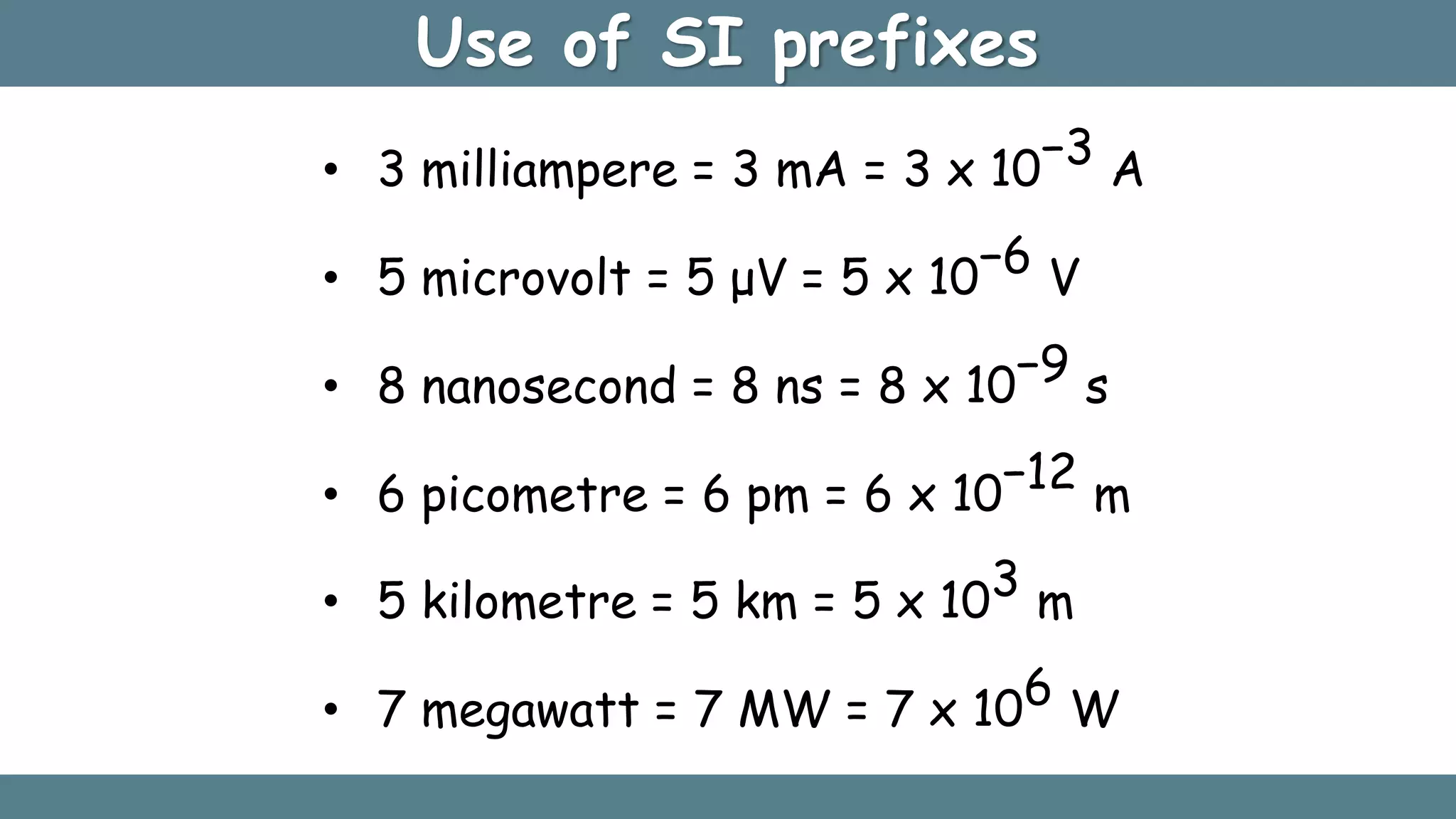The document discusses the importance of measurement in physics, including the need for accurate measurements of physical quantities such as length, mass, and temperature to perform experiments and validate theories. It outlines different types of physical quantities, measurement units, and systems like SI, cgs, and fps, along with their characteristics and significance. It also covers aspects of accuracy, precision, significant figures, and types of measurement errors, providing guidelines for proper measurement practices.








































![Seven dimensions of the world
Fundamental quantities
Length
Mass
Time
Temperature
Current
Amount of substance
Luminous intensity
Dimensions
[L]
[M]
[T]
[K]
[A]
[N]
[J]](https://image.slidesharecdn.com/chap1-uam1-230204132115-c9dabb3a/75/Chapter-1-Unit-s-and-Measurement-pptx-41-2048.jpg)

![=
Mass
length × breath × height
[Density] =
[M]
L × L × L L3
[M]
= = [ML−3]
Dimensions of a physical quantity
Density =
Mass
Volume
Example:
Hence the dimensions of density are 1 in mass and − 3 in length.](https://image.slidesharecdn.com/chap1-uam1-230204132115-c9dabb3a/75/Chapter-1-Unit-s-and-Measurement-pptx-43-2048.jpg)

![To check the correctness of equation
By writing the dimensions we get,
∆x = displacement = [L]
Consider the equation of displacement,
vit = velocity × time =
length
time
× time = [L]
at2 = acceleration × time2 =
length
× time2 = [L]
time2
The dimensions of each term are same, hence the equation is
dimensionally correct.
1
∆x = vi t +
2
a t2](https://image.slidesharecdn.com/chap1-uam1-230204132115-c9dabb3a/75/Chapter-1-Unit-s-and-Measurement-pptx-45-2048.jpg)
![To convert units
Let us convert newton SI unit of force into dyne CGS unit of force .
The dimesions of force are = [LMT−2]
So, 1 newton = (1 m)(1 kg)(1 s)−2
and, 1 dyne = (1 cm)(1 g)(1 s)−2
Thus, =
1 newton 1 m 1 kg 1 s
1 dyne 1 cm 1 g 1 s
−2
=
100 cm 1000 g 1 s
1 cm 1 g 1 s
−2
= 100 × 1000 = 105
1 newton = 105 dyne
Therefore,](https://image.slidesharecdn.com/chap1-uam1-230204132115-c9dabb3a/75/Chapter-1-Unit-s-and-Measurement-pptx-46-2048.jpg)
![To derive a formula
The time period ‘T’ of oscillation of a
simple pendulum depends on length ‘l’
and acceleration due to gravity ‘g’.
Let us assume that,
T 𝖺 𝑙a 𝑔b or T = K 𝑙a 𝑔b
K = constant which is dimensionless
Dimensions of T = [L0M0T1]
Dimensions of 𝑙 = [L1M0T0]
Dimensions of g = [L1M0T−2]
L0M0T1
Thus, = K [L1M0T0]a [L1M0T−2]b
= K LaM0T0 LbM0T−2b
L0M0T1
a + b = 0
= K La+bM0T−2b
& − 2b = 1
∴ b = −
1
2
& a =
T = K 𝑙1/2 𝑔−1/2
1
2
∴ T = K
𝑙
𝑔](https://image.slidesharecdn.com/chap1-uam1-230204132115-c9dabb3a/75/Chapter-1-Unit-s-and-Measurement-pptx-47-2048.jpg)


















































